On your camera, you will have a selection called Tv:
Tv = Time Value This mode is a "shutter priority" setting. You pick the shutter speed desired and it will automatically set the aperture (or F-stop) for you.
Using a shutter preferred automatic mode is great for action. You may want a high shutter speed to stop action (such as 1/500) or a lower one to slow things down.
Here is an example of two airplanes. This one was shot at 1/2000 second (sec) shutter speed:
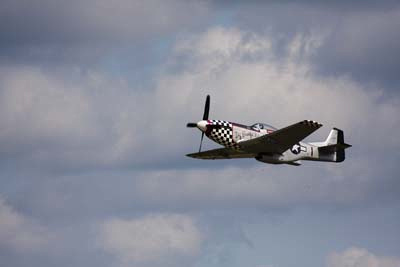 You can see the propeller is stopped which makes the plane appear unnatural. As a pilot, the last thing I want to see is a stopped propeller out in front of me.
You can see the propeller is stopped which makes the plane appear unnatural. As a pilot, the last thing I want to see is a stopped propeller out in front of me.
So to make it more natural and have the plane appear to be flying, lower the shutter speed to no higher than 1/250 sec. This next shot was done at 1/125 sec:
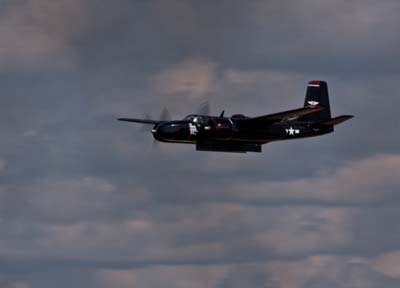 Notice the motion in the propellers. Keep in mind what you want to shoot, what you need in focus and what you might want blurred.
Notice the motion in the propellers. Keep in mind what you want to shoot, what you need in focus and what you might want blurred.
To use the Tv mode in a different way, here is another situation where I'm shooting a waterfall. The shutter speed was set at 1/125 sec. and you can see the water as it appeared to the eye.
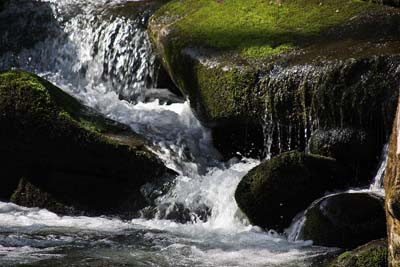 I then set the shutter speed to 0.3 seconds. This allows the shutter to be open longer catching more of the water which causes the soft flowing effect. I always get a kick out of people who say it's "airbrushed". No, these are right out of the camera. It's something any photographer can do...including you!
I then set the shutter speed to 0.3 seconds. This allows the shutter to be open longer catching more of the water which causes the soft flowing effect. I always get a kick out of people who say it's "airbrushed". No, these are right out of the camera. It's something any photographer can do...including you!
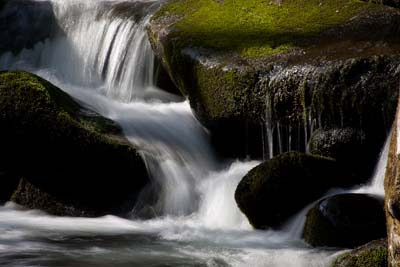
I don't recommend using a shutter speed of less than 1/60 if you are hand-holding the camera. For slow shutter speeds, you will want the camera on a tripod. To shoot the slow shutters like the image above, you will also want to have a cable release or a remote to activate your shutter. Even though your camera is on a tripod, when you manually click the shutter button to take the picture, you will be creating motion in the tripod.
Here is one last example of deciding what you want in focus and what can be blurred:
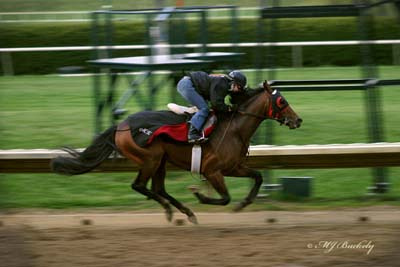
You can see here where the horse and rider are in focus yet the legs and the background are blurred, indicating motion. This one was also shot at 1/125 sec.
So experiment with the Tv setting. Pick different shutter speeds and see what happens.
If you wish to share an image or receive critique, email your image to [email protected].
Good luck - and Let's Practice!
]]>What issues do you have with your camera, photos or processing software? What do you wish to learn? I welcome your suggestions and questions for future posts. My philosophy is... the only "dumb" question is the one that isn't asked... so fire away.
To start off this column, if you are using "automatic" all the time, how about venturing into the other modes? What is stopping you from using the Av or Tv setting on your camera? What about full Manual mode?
Let's talk about aperture and the Av (Aperture Priority) mode today and start with what the aperture does:
Aperture (F-stop) This is the amount of light the lens opening allows into your shot. The higher the number (like f16) would allow less light in than a lower number (like f4.5). Depth of field, the amount of the image that is in focus, is controlled by the aperture.
Av = Aperture Priority Mode This mode allows you to set the aperture opening or F-Stop and the camera will automatically set the shutter speed for you. Using the aperture mode allows you to select a certain aperture setting based on your needs. For example, you want to shoot a flower but you don't want the background to be in focus...you would select a lower aperture like f2 or f4.5. Or you wish to do a closeup of the flower and you want as much of the flower in focus as possible...you would select a higher aperture like f16 or f22.
With the age of digital, you can take pictures all day long and are only limited by the size of your data card or the portable storage you carry with you. Feel free to experiment. You can always delete the ones you don't like and try again.
To start off, here is an example of changing the aperture on a flower image. The image on the left was shot at f18 giving it a greater depth of field. As you see, the background is rather "busy" - meaning it has objects in the background that can detract from the main view of the subject.
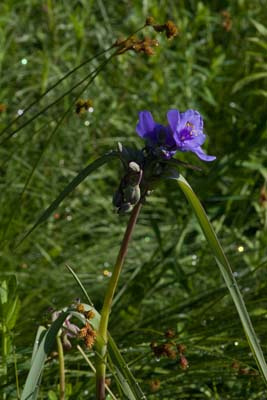
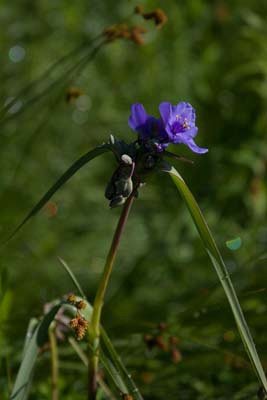
To create a stronger subject, the image on the right was shot at f5.7. Now you have more of the background blurred out and a stronger presence of the flower.
In later posts, I'll discuss removing other distractions that still remain in these images.
(Photos by Marti Buckely)
A quick note here on composition: you see the flower is not dead center in the frame. Also, I've used a vertical format to show the long stem of the flower. Don't hesitate to turn your camera on its side to get a better shot.
I will often use the Av setting when I'm doing shots for use with HDR (High Dynamic Range) images. This process (HDR) combines three or more images (I use 2 stops under exposed, normal and 2 stops over-exposed). To get the right shots for HDR, the aperture needs to be the same for each of the three (or more) shots. This is where the Av mode works well. You pick the aperture you want and the camera will do the rest.
So head on out, find a nice subject and "let's practice" using our aperture priority setting (Av).
]]>